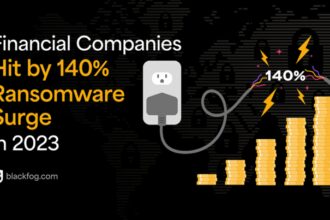The corridors of economic power in Ottawa buzzed with anticipation Monday as the Bank of Canada released its second-quarter economic surveys, revealing a complex tapestry of business sentiment and consumer expectations that could shape monetary policy decisions for months to come.
The Business Outlook Survey, conducted between April and June 2025, indicates that Canadian firms are navigating a cautious path forward amid persistent economic uncertainty. Business sentiment showed modest improvement compared to the first quarter, though it remains below historical averages as companies continue to adjust to the higher interest rate environment that has characterized the Canadian economy since late 2023.
“We’re seeing businesses operate with one foot on the gas and one on the brake,” said Laura Chen, Senior Economist at Vancouver-based Westshore Financial. “They want to expand and capitalize on emerging opportunities, but there’s still significant hesitation about making major investments while economic indicators remain mixed.”
Perhaps most notable in the business survey is the shifting landscape of inflation expectations. After nearly two years of above-target inflation, 67% of businesses now anticipate inflation will return to the Bank’s 2% target within the next two years—up from 51% in the previous quarter. This represents a significant vote of confidence in the Bank’s monetary policy strategy.
Labor market dynamics continue to evolve, with the survey revealing that 42% of businesses report labor shortages easing compared to twelve months ago. However, regional disparities remain pronounced, with Atlantic Canada and parts of Quebec still experiencing significant hiring challenges, particularly in healthcare, technology, and specialized manufacturing sectors.
On the consumer side, the Canadian Survey of Consumer Expectations paints a picture of gradually improving sentiment. Canadians’ inflation expectations for the next year have decreased to 3.1%, down from 3.8% in the previous quarter and the lowest reading since early 2022. This downward trend suggests the Bank’s messaging about controlling inflation is resonating with the public.
Household spending intentions remain subdued, with 58% of respondents indicating they plan to reduce discretionary spending over the next six months. This cautious approach reflects ongoing concerns about housing affordability, with 74% of non-homeowners reporting they believe they may never be able to afford a home in their current community.
“What we’re seeing is a recalibration of consumer expectations,” explained Mark Johnson, Director of Economic Research at CO24 Business. “Canadians are adjusting to a new normal where financial prudence takes precedence over consumption-driven growth.”
The surveys arrive at a critical juncture for the Canadian economy. With GDP growth hovering around 1.8% and unemployment at 5.7%, policymakers at the Bank of Canada face the delicate task of balancing inflation control against the risk of overly constraining economic activity.
The data will undoubtedly inform the Bank’s next interest rate decision on July 30, with markets increasingly anticipating the possibility of another quarter-point cut if inflation continues its downward trajectory. Currently, overnight rates stand at 3.75%, having been reduced twice already in 2025.
For everyday Canadians, these economic indicators translate to real-world consequences—affecting everything from mortgage rates to job security. As summer unfolds, all eyes will remain fixed on the Bank of Canada as it navigates these complex economic crosscurrents, seeking to guide the Canadian economy toward sustainable growth without reigniting inflationary pressures.
























